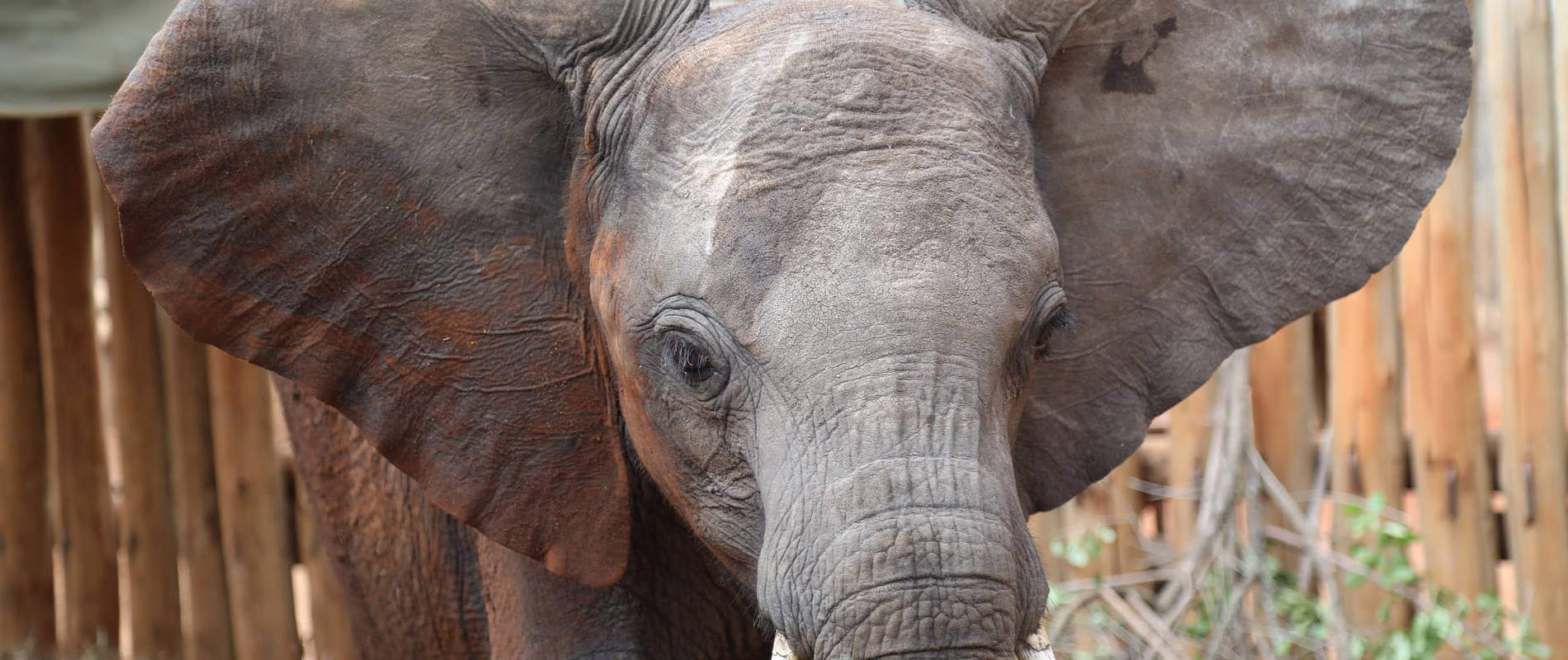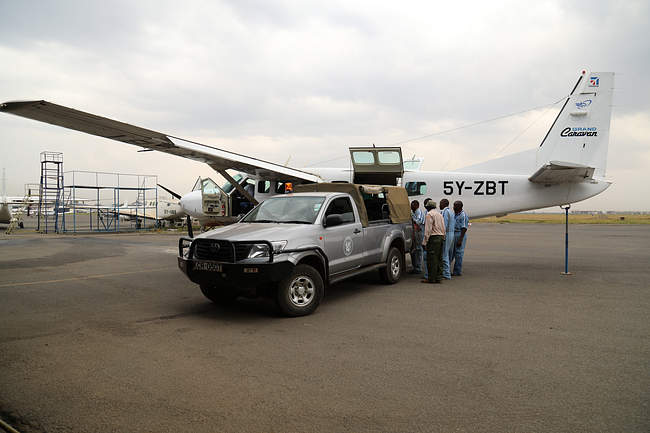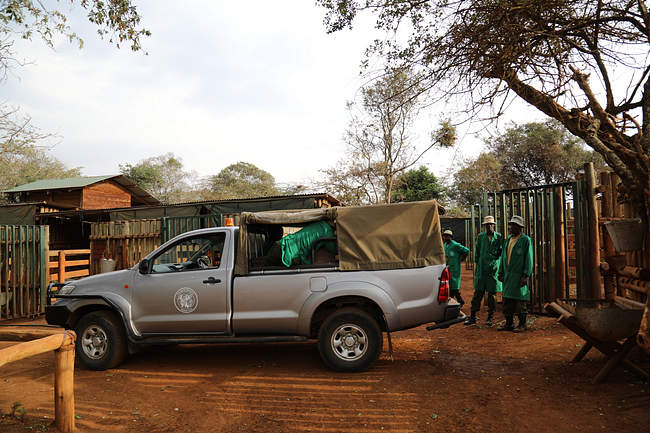On the 13th of September, Angela Sheldrick received a phone call from a Safari guide regarding an abandoned elephant calf in the Masai Mara. The reports revealed that he cut a tragic figure dwarfed by the vast plains with the Oloololo escarpment beyond. With elephant herds coming and going he constantly remained rejected, always emerging from the group to be left alone as the herds moved on.
Given that these observations had been made over a number of days it was obvious he was an orphan, with his sunken cheeks and pot belly a sign of malnutrition, it was a miracle he was still alive in an area with such a high population of predators. His temporal glands were streaming, a clear sign of stress, but he concentrated on feeding on the grass, and otherwise appeared strong.

Angela contacted the DSWT/KWS Mara Veterinary Unit requesting they head to the site to check on the young calf and consult with the Mara Conservancy management to decide whether they felt a rescue was necessary. A meeting at the site where the calf was last spotted was coordinated involving rangers from the nearby Kilo 2 Ranger post, the tourism warden of the Mara Triangle Alfred Bett, along with the KWS/DSWT veterinary team.
While he was estimated to be over two half years old it was evident to all who watched him that without intervention he would not make old bones. The predators in this area are very efficient baby elephant hunters, and he was at risk from both lions and hyenas as long as he remained alone with little protection. It was eventually decided to rescue him before it was too late, but given the time plans were deferred until the next day. A robust baby nearly 3 years of age, the rescue required planning and man power to heave and lift him onto both the Land cruiser and the aircraft, and so logistics were arranged and Angela was informed that the rescue was going to happen the following day.
On the 14th of September 2017 the DSWT/KWS Veterinary Unit headed out early to scour the area where he was last located the previous day. This was not a simple task as he was not easy to spot given the long grass at the time, which quite literally engulfed him at times. It was everybody’s hope that he had survived yet another night given all the risks, and that he would be found alive and not mutilated by predators.
Thankfully he was eventually sighted at midday and all the arrangements were first made to mobilize the Nairobi team of DSWT Keepers before any attempt was made to capture him, ensuring that he did not have be recumbent for too long. Thankfully his location was not terribly far from the Serena Airstrip in the Masai Mara Triangle. On site were members of the DSWT funded Mara Mobile Veterinary Unit along with CEO of the Mara Conservancy Mr. Brian Heath, Alfred Bett, Emanuel Melai administrator from the Conservancy, and David Aruasa the tourist officer.
Support our Orphans' Project
Once the DSWT Nairobi team finally got airborne it was 2.00pm and Angela coordinated the capture of the baby with the Veterinary team. Everyone sprang into action and overpowered him with a blanket thrown over his head and he was restrained with straps. They then lay him on a canvas stretcher, loaded him into a Land cruiser and drove him the short distance to the airstrip to await the Nairobi team. At 2.45 the two rescue teams met on the airstrip to transfer their precious, but heavy, cargo. The hefty young calf took quite some loading, with all hands on deck heaving and pulling, but once he was comfortably strapped into the back of the Cessna Caravan aircraft no time was wasted and they were quickly airborne to join the young orphaned calves presently in the Nairobi Nursery.
He arrived bewildered but strong and once safely secured in his stockade he was surrounded by the other orphaned elephants who had returned for the night. This was comforting for him. A blanket was drawn across his stockade door so that he was not disturbed by anyone and could be given time to settle down, helped by his stockade neighbor Rapa.
He concentrated on feeding on the freshly cut greenery placed in his enclosure, but Rapa was extremely interested in his new neighbor having previously had Ndiwa next door so this was a dramatic change, and being a young bull himself he was sizing the situation up very closely, given that this bull was significantly bigger than him. Ndiwa was moved to leave the large stockade available for the newcomer, mindful that he would take a few days to tame down so required ample space.

The Mara Conservancy team involved in the rescue requested this calf be named Sapalan, and given that they had all played such a pivotal part in saving him we honored their wish. Sapalan took time to tame, but in no time at all he was hooked on his bottle. This thankfully helped him settle down, and very soon he became comfortable in the company of the Keepers; after a couple of weeks he was able to join the others out in the Nairobi National Park.

Given that he has already lived a wild life for well over two years we feel sure that it will not be very long before Sapalan joins the wild Ex Orphans for a more independent life, now that he has joined our Ithumba relocation unit in Tsavo National Park.







